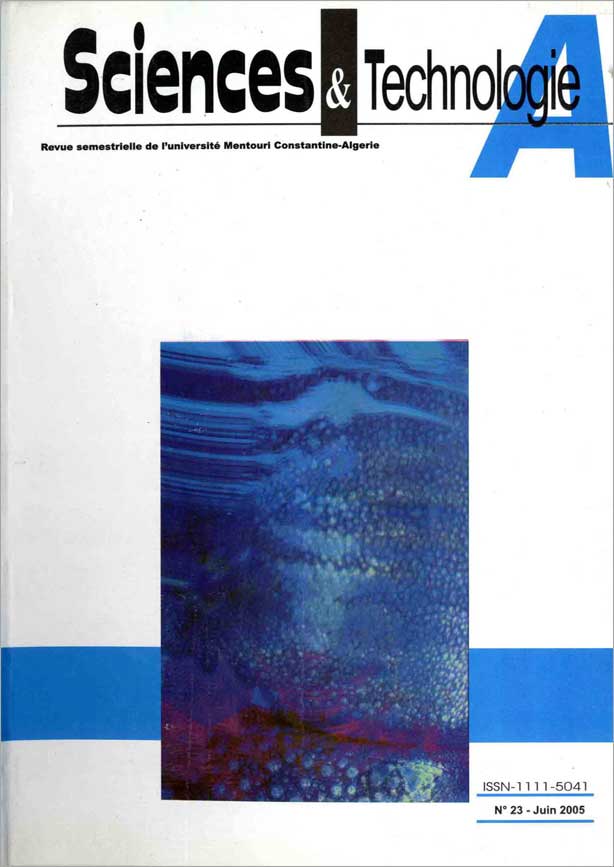CRITICAL SLOW DOWN EFFECT OF CONVERGENCE ON THE FORMAL ORTHOGONAL POLYNOMIALS METHOD
Keywords:
percolation, critical slow down, numerical relaxation, formal orthogonal polynomialsAbstract
The critical Slow down Effect (CSDE) is the major obstacle in the large scale numerical simulations of physical systems. In our case, to obtain the current distribution on a random resistor network at the percolation
threshold, by the Jacobi relaxation method, the number of iterations needed for the system to relax to its steady state grows faster than the volume. In this paper, we describe technical details on the formal orthogonal polynomials method and comment our results. We show that the main advantage of this method is that there is not CSDE. However it appears a new type of slow down by the difficult choice of an initial vector y.
Downloads
References
R. Kopelman, J. Stat. Phys. 42, 185 (1986).
W. D. Dozier, J. M. Drake, and J. Klafter, Phys. Rev.
Lett. 56, 197 (1986).
P. Meakin, Phys. Rev. A34, 710 (1986).
R. Rammal, C. Tannous, P. Breton, and A.-M. S.
Tremblay, Phys. Rev. Lett. 54, 1718 (1985).
see, for example, K. Huang, “Statistical Mechanics” ( J.
Wiley & Sons, 2nd ed. 1987).
S. Havlin and D. Ben-Avraham, Adv. Phys. 36, N°. 6,
(1987)
M. Barthélémy, S.V. Buldyrev, S. Havlin and H.E.
Stanley, arXiv:cond-mat/0002252v2, 23 Feb 2000.
J. Adler, A. Aharony, R. Blumenfeld, A. B. Harris, and
Y. Meir, Phys. Rev. B 47, 10, 5770 (1993).
H. Tanino, A. Kuprin, and H. Deai, Phys. Rev. B 53, 4,
(1996).
B. Derrida, J. G. Zabolitzky, J. Vannimenus, and D.
Stauffer, J. Stat. Phys 36, Nos. 1/2, 31 (1984).
C.J. Lobb, and D. J. Frank, J. Phys. C 12, L827 (1979).
J. Hoshen, and R. Kopelman, Phys. Rev. B 14, 3428
(1976)
H. Sher, and M. Lax, Phys. Rev. B 7, 4491 (1973).
M. S. Friedrichs, and R. A. Friesner, Phys. Rev. B 37,
No. 1, 308 (1988).
L. de Arcangelis, S. Redner, and A. Coniglio, Phys.
Rev. B 31, 4725 (1985).
R. Orbach, J. Stat. Phys. 36, 735 (1984).
A. Blumen, G. Zumofen, and J. Klafter, J.
Luminescence 45, 90 (1990).
R. Fisch, and A. B. Harris, Phys. Rev. B 18, 416
(1978).
J.-P. Hovi, and A. Aharony, in Proc. Of the Nonlinear
and Random Processes, Taipei,
-24 july, p. 68, ed. C.-K. Hu and K.-T Leung,
Elsevier (1995).
T. Nakayama, and K. Yakubo, ReV. of Modern Phys.
, No 2, 381 (1994).
J.-S. Wang, and R.H. Swendsen, Physica A 167, 565
(1990).
G. G. Batrouni, A. Hansen, and M. Nelkin, Phys. Rev.
Lett. 57, No. 11, 1336 (1986).
C. Lanczos, J. Rs. Natl. Bur. Stand. 45, 255, (1950).
C. Lanczos, J. Rs. Natl. Bur. Stand. 49, 33, (1952).
C. Brezinski, M. Redivo Zaglia, and H. Sadok, Numer.
Math. 83, 53, (1999).
G.H. Golub, and C. F. Van Loan, Matrix
Computations, ed. The Johns Hopkins Univ. Pres.,
(1989).
C. Brezinski, M. Redivo Zaglia, and H. Sadok, Numer.
Math. 83, 53 (1999).
C. Brezinski , and H. Sadok, Lanczos type algorithm
for systems of linear equations, Publication ANO – 272,
may 1992, USTL (Lille-France).
O. Axelsson, Lectures notes in Mathematics 572,
Springer-Verlag, Berlin, Heudelberg, New-York, pp. 2-
(1977).
C. Penneta, L. Reggiani, Gy. Trefán and E. Alfinito,
arXiv.cond-mat/0202268 v1, 15 Feb 2002.
O; Stenull and H.-K. Jansen, arXiv.cond-mat/0110560
v1 26 Oct 2001







